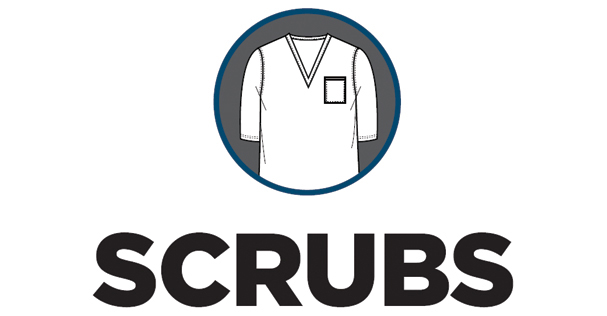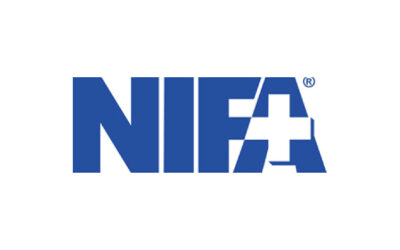by Marcia Patrick, MSN, RN, CIC
There are scrubs and there are scrubs. We love them! They’re comfortable, wash well and usually don’t require ironing. What’s not to like! There are, however, different purposes for scrubs and different ways to manage them.
Scrubs worn in an OR for surgery or other restricted or semi-restricted areas in your facility should be furnished and laundered by the facility. These scrubs are donned fresh at the start of the work shift and are removed and laundered after the end of the shift. They are not worn to and from the facility. Many organizations have policies that state removal of scrubs from the premises constitutes theft.1
The other scrubs are used as work clothes outside operating areas. These are generally purchased and laundered by the wearer. In the olden days, we wore white uniforms, which were heavily starched and worn with white nylons and white shoes. And don’t forget the caps! It was a great day when those went by the wayside! Scrubs are definitely more comfortable and easier to manage! Other scrubs have no requirements other than Bloodborne Pathogens discussed later. They should be laundered after each wearing.
The rationale behind wearing OR scrubs is to prevent introduction of foreign and potentially infectious matter into the operating room, and in so doing, reduce the risk of surgical infection in the patient.
As noted, AORN is the reference for OR scrub management. In the past several years, they have improved their Standards and Recommended Practices to include grading the evidence for their recommendations. Their Chapter III, Surgical Attire, is being reviewed by AORN to grade the scientific evidence behind the recommendations. This may result in changes to current guidelines. Stay tuned!
Some facilities allow staff to purchase and launder their own OR scrubs, or provide the outfits and allow home laundering. Many facilities have reported no increase in infections doing this, while others have tried it with less success. In considering either of these approaches, be sure to check your state requirements.
It’s important to note that scrubs of either type, OR or outside-the-OR use, are NOT personal protective equipment (PPE)! Staff wearing facility-owned and laundered scrubs may not be as quick to put on a gown when contamination with blood or body fluids is anticipated because they know they can just get another set and change and not have to deal with cleaning them. Sometimes notes are jotted down on pant legs rather than on a piece of paper. Depending on the ink, it may be difficult to remove in laundering. When staff wear their own scrubs, they’re more likely to grab a gown since they know they’ll be the ones having to deal with the mess.
Under the Bloodborne Pathogens Standard, scrubs (or any clothing, for that matter) contaminated with blood or other potentially infectious materials (OPIM) must be laundered by the facility and not taken home. Each facility should have a written policy on how they will manage personal clothing soiled with blood or OPIM. Bear in mind that OPIM includes body fluids; specifically, semen and vaginal secretions; cerebrospinal, pericardial, pleural, peritoneal, synovial and amniotic fluids, as well as any body fluid where blood is present. It does NOT include stool, urine, sweat, saliva or tears unless visibly bloody. It is certainly the prerogative of the facility to include urine and especially stool in their contaminated clothing policy; there are a lot more germs in stool than the aforementioned OPIM.

Laundering OR or other scrubs by the facility does not mean you must have a washer and dryer, although some organizations do have these. Another AORN recommendation in the Surgical Attire section is that an accredited healthcare laundry be used. Accredited laundry facilities are required to follow specific washing and drying parameters that optimize removal of microorganisms. The Healthcare Laundry Accreditation Council (HLAC) offers voluntary accreditation for those laundry facilities that process reusable health care textiles and which incorporate OSHA and the Centers for Disease Control and Prevention (CDC) guidelines and professional association recommended practices. 3 Hospital laundries should be meeting these requirements.
There is ample evidence that microorganisms, including those associated with surgical and other infections, live for various periods of time on fabrics and plastics. Specific water temperatures, agitation, and chemicals can remove and/or kill organisms. Often these parameters cannot be met using home laundering equipment, either in the home or in your facility. If you have your own washer and dryer, develop a written policy for wash temperature, cycle and chemicals, and drying temperature and time. Be sure you have the owners’ manuals for both machines and have them serviced per the manuals. You must also have a cleaning policy for disinfecting the inside and outside of the machines on a regular basis.
Scrubs can be expensive as there can be a high rate of loss. In most cases, only the OR staff need facility-provided and laundered scrubs. Preop and post-op staff do not necessarily need OR scrubs, unless they enter the OR on a regular basis. It’s less expensive to supply only those who must have OR scrubs. The AORN Standards have excellent information on selection of OR scrubs to get the most benefit from them.
1. AORN Standards and Recommended Practices, 2013, pp. 54-55.
2. OSHA Bloodborne Pathogens Standard, 29CFR1910.1030.
3. AORN Standards and Recommended Practices, 2013, p. 56.
About the Author
Marcia Patrick has over 30 years of experience in infection control, including acute care, ambulatory care, adult and pediatrics in medical centers and community hospitals. A 30+ year member of the Association for Professionals in Infection Control and Epidemiology, she served on the APIC Board of Directors from 2009 to 2012. Marcia is also on the faculty of the APIC Ambulatory Surgery Course and helped develop the program to meet the 2009 CMS infection control requirements for ambulatory care. After serving 21 years in the Army Nurse Corps, Marcia was with MultiCare Health System, Tacoma, Wash., until 2011. In both, she was a director of infection control for multiple hospitals and clinics. A sought-after speaker. Marcia is currently teaching and consulting and is a surveyor for AAAHC.








